The Legend of Zelda: A Link to the Past is one of my all-time favorite games. It was a big improvement over the previous games in the Zelda series and set the standard for Zelda games to come, especially in terms of translation and localization. For once, Zelda characters actually spoke normal English and things made sense!
Anyway, a little ways into the English version of the game you’ll find an item called the Magic Hammer. This item lets you pound obstacles into the ground, attack enemies, and other things like that, which makes perfect sense given the name.
…Except it turns out it was called the “MC Hammer” in the original Japanese script:
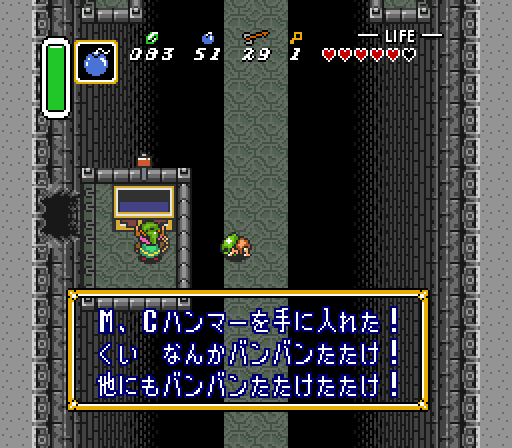 | 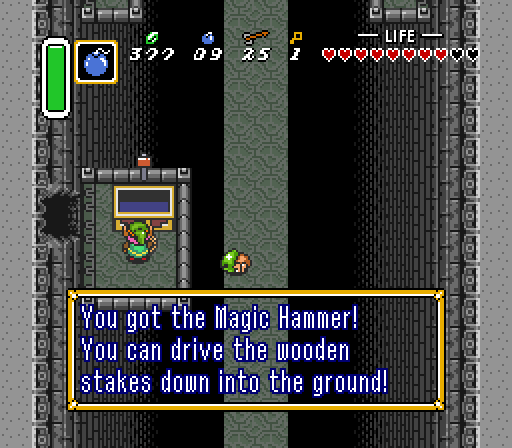 |
| Zeruda no Densetsu: Kamigami no Toraifōsu (Super Famicom) | The Legend of Zelda: A Link to the Past (Super NES) |
Here’s a look at what the game says when you get this item:
| Japanese Version | English Version |
| You got the M,C Hammer! | You got the Magic Hammer! |
| Bam, bam! Pound those dumb ol’ stakes! | You can drive the wooden stakes down into the ground! |
| Bam, bam! Pound other stuff too! | You can use it to pound on other things too! |
Why is there an MC Hammer reference in the Japanese script? I have no idea. The Zelda games ARE known for including references to other Nintendo stuff, but I’m not sure how often real-world stuff is referenced like this.
MC Hammer was well known in Japan at the time of this game’s development and release, so I guess maybe someone on the writing team was a fan or something – I’d love to know more. Of course, the item’s name was changed when released outside of Japan, probably to avoid legal issues and such. Actually, I’d love to know more about that, too.
I’m also curious to see if the name was changed in any of the subsequent Japanese ports and re-releases. I guess that’s something I can look into whenever I do a full comparison of the game sometime.
At first, it might seem silly and almost hard to believe that an old Japanese game of all things would reference such a decidedly Western bit of pop culture like this. But apparently it’s more common than I thought – another Japanese Super Famicom game even references Vanilla Ice’s “Ice Ice Baby”:
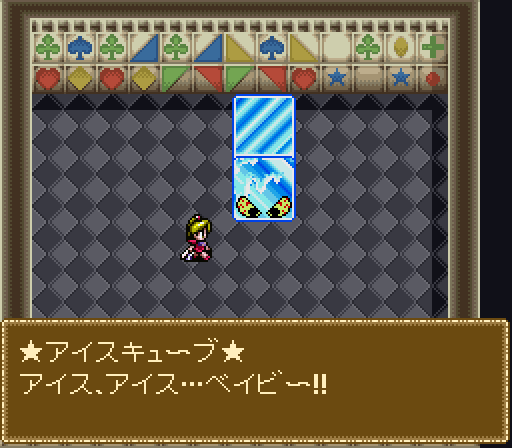 | 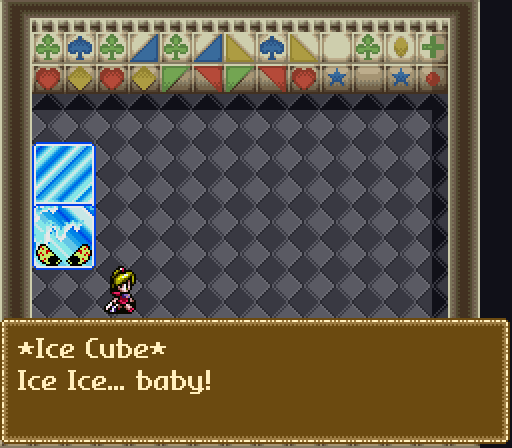 |
| Rejoice! Aretha Oukoku no Kanata (Super Famicom) | Fan translation (unreleased) |
This is from the Super Famicom game “Rejoice! Aretha Oukoku no Kanata” which was sadly never released in English. There’s a fan translation patch in the works here, though.
Anyway, this really makes me wonder if folks like MC Hammer and Vanilla Ice have ever known that they had been inserted into Japanese video games as goofy little references like this. That’s gotta be an interesting and unique feeling. It also makes me wonder what other Western pop culture has hidden itself in Japanese games – if you know of any, let me know in the comments.


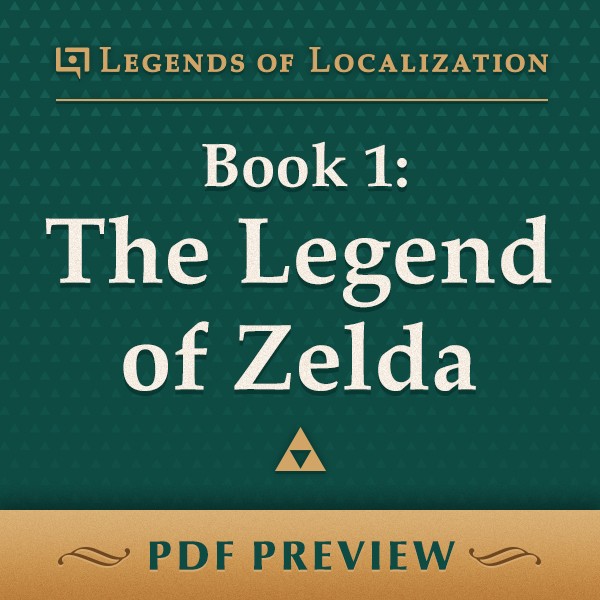
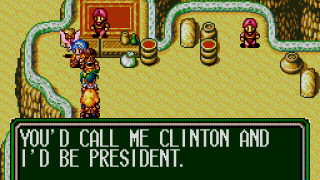
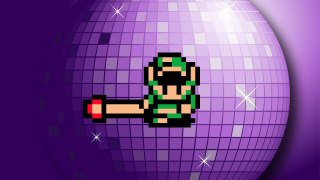
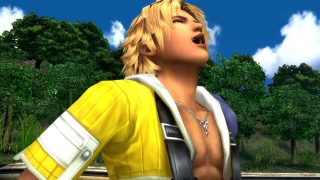
There’s a game only released in Japan called Holy Diver which has references not only the music video for the song of the same name by Dio, but also has a bunch of other rock references in the story like a wizard named Ozzy being the foster father of the main character and his brother who also have rocker-themed names that I can’t remember at this moment.
…
It’s relevant yo.
In a similar vein, nearly every character in JoJo’s Bizarre Adventure has a name which references western rock.
http://jjba.wikia.com/wiki/List_of_cultural_references_in_JoJo%27s_Bizarre_Adventure
I’ve just played the Jap. GBA version for a screenshot of the Hammers name in that version to help you and: http://www.mediafire.com/convkey/11a6/1qmy1b42t5knin2fg.jpg
It seems to be named the same as the SNES version. Also, when you make the full comparison (which I will be looking forward to), I think you should compare the SNES Jap., SNES NA, SNES French, SNES German and all languages from the GBA version (Jap., US, Fr., De., Es., It.). It sounds like a lot, but don’t worry, it is. If you want, you can compare the Virtual Console versions.
Sorry that I’m commenting again, but is it possible that you’ll also compare the Pirated NES version as well? Seems unlikely, but yeah.
Many American pro wrestlers appear in Japanese puroresu games that have no license with any wrestling company. Often times, wrestlers from all over the world have their names and appearances slightly changed, but moves and taunts remain the same. For example, Hulk Hogan has appeared as “Titan Morgan” in “Wrestle War”, “Golden Hawk” in “Mat Mania”, and “Axe Duggan” in the “Fire Pro Wrestling” series (which is a reference to his Japan only finishing move, the “Axe Bomber”). Granted, Hogan (like many other western wrestlers) did perform in Japan for a number of years, but he’s the best example I can think of off the top of my head. There are many others.
Again, sorry for the multiple posts, but you probably should do the VC, because it includes a portuguese translation, but if you want to stick to Japanese->English, I understand.
Guys, how the heck is Mato supposed to compare other language versions of the game if he does not speak these languages? There’s absolutely no point in that.
Why are you saying “guys”, when I’m the only one talking about the other languages?
Perhaps because you posted under two different names.
Just look at Emil’s post. He also talked about comparing various other languages.
Oh, ok, I get it. How am I supposed to know that you wrote both posts?
Wow, this is really interesting. These days hardly any younger people will remember MC Hammer, so people will be playing this game not getting the reference at all.
As a side note, didn’t the “Hammer Time” reference actually get added into the English version of Super Mario RPG? In the Japanese version, that boss is a lot easier, and I’ve never seen them use the move.
On that same point, is the Disco Inferno reference in Link’s Awakening (when you get the fire rod) in the Japanese version as well, or was that added in the localization?
2 years too late, but yes, Hammer Time is in the JP version as “Hammer Barabara.” Both versions of the game are the exact same, aside from differences in text; no bosses are easier or harder.
Wow, that’s a weird one. Somebody should contact those Did You Know Gaming guys about this for their next video.
Another western pop culture reference is the opening scene of Star Ocean on the SFC, which pays homage to the opening scene of Star Trek VI: The Undiscovered Country.
I know I’m the only one, but I still think the original Legend of Zelda was the best one. It had a certain freedom of exploration that subsequent games lacked (though LTTP was clearly better than any of the others). If I were to rank the Zelda series, it would be something like this:
1) The Legend of Zelda
2) A Link to the Past
3) 3D Dot Game Heroes
4) Link’s Awakening
5) Skyward Sword
6) Wind Waker
7 (tie)) Basically all the rest of them
n) Majora’s Mask
I don’t think you are alone. Both games are true masterpieces on their respective systems, but together with Super Metroid, ALttP is definitely my favorite game of all time, it has aged like fine wine. There’s one flaw that hurts it though:
“Also, there are walls that can be destroyed with bombs. In actuality, walls can be broken even if they don’t have cracks. When you hit the walls with your sword, they normally make a “ting ting” sound, but walls that can be broken make a hollow sound. From the perspective of the player, when they go around hitting all the walls and find one that makes a different sound, they’ll be very pleased with themselves. But, of course, there’s also the problem of how much longer that will result in people playing. Concerned, I balanced the joy players would get from hunting around and at long last discovering a breakable wall and the thought of how long that would realistically take, and, in the end, opted for putting in visible cracks on the walls that can be destroyed.” – Shigeru Miyamoto, 1991
This was a huge mistake IMO, not only did it render the neat hollow sound effect mechanic useless but it also removed the whole exploration aspect that was such a huge part of the first game. It’s sad that they chickened out at the last moment when they had reached such a nice compromise with the hollow sound effect mechanic. Little did we know back then that the exploration would be almost completely extinct in future installments.
I think there are some bombable walls without cracks, and I’m sure there are cracked non-bombable walls. There are also some walls which have a bigger crack, you can knock those down with the Pegasus shoes. I’m only saying this, because a lot of people don’t seem to know that.
Yes, you are right about that and I thought of mentioning it but there’s really no need to check first if the wall can be knocked down or not by using the Pegasus Shoes when you can just dash into it instead, the hollow sound mechanic was such a brilliant idea for exploration that largely got tossed away. 🙁
The BS-X Ancient Tablets episode has far better hidden wall cracks. The sword method is the only practical one. Ironically, you don’t have nearly as much time as in the original to do it all the time, since you’re under a time limit.
I’m not entirely sure but I think the item is only called MC Hammer when obtained, not in the inventory, I know it’s called Magic Hammer in the manual at least.
Translation from byuu’s forum member Kakashi, in a post I made about this very line:
The MC Hammer was placed in your hands!
With a BANG! BANG! hit some post!
With a BANG! BANG! c’mon, hit something else!
I also commented how to the next room allows Link to obtain plenty of jukebox money. 😉
(B52’s Love Shack, if you don’t remember it)
Knock a little louder, sugar.
“was placed in your hands” in the stiffest and most awkwardly literal translation of 手に入れた I’ve ever seen. Ow.
Yeah, I was gonna say the same. I’d also argue that that’s more like ~が手に入った instead, but I guess that’s nitpicking semantics.
Beetlejuice is an enemy in shin megami tensei 2
Holy crap that sounds awesome!
Japan liked MC Hammer?
Yeah, in general any big stars in the West are really popular in Japan too.
Ogre Battle references a lot of Queen songs.
The name of the series is “Ogre Battle”, to start with. The first game’s subtitle “March of the Black Queen” is also a Queen song, as is the second game’s subtitle, “Let Us Cling Together”.
It gets better with that second one. Let Us Cling Together was a very special song written half in Japanese for a concert in Japan that Queen did. http://en.wikipedia.org/wiki/Teo_Torriatte_%28Let_Us_Cling_Together%29